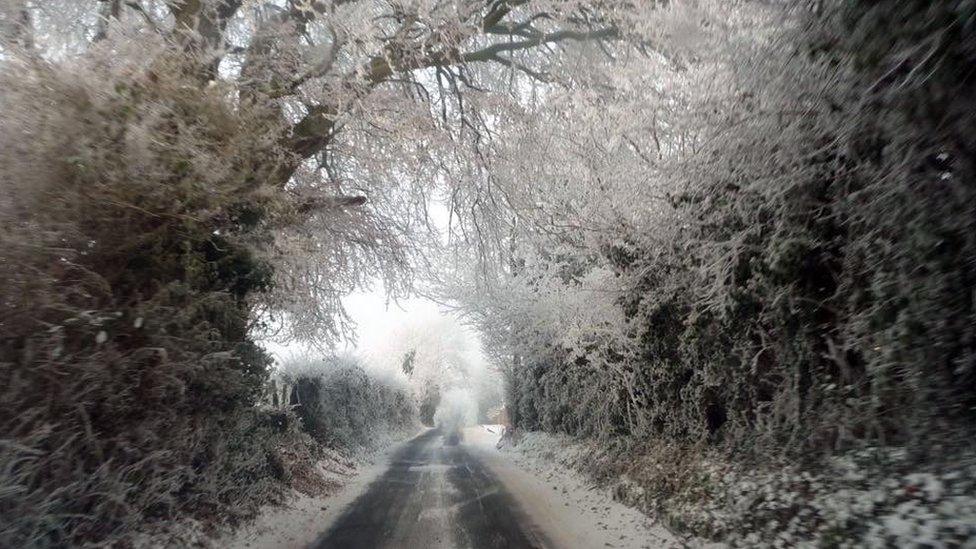UK snow: Answers to your most-asked questions
- Published
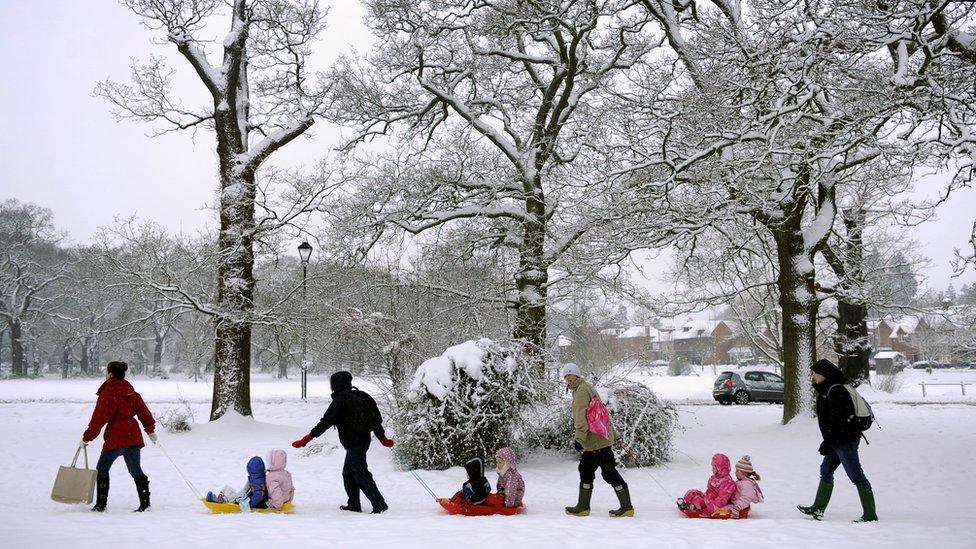
Wintry weather has grounded flights, closed hundreds of schools, and caused travel chaos across the UK.
But while commuters frantically clawed at the ice on their windscreens, many took to the web to ask all manner of snow-related questions.
Here are the answers to some of the most-searched.
How do I efficiently de-ice my car?
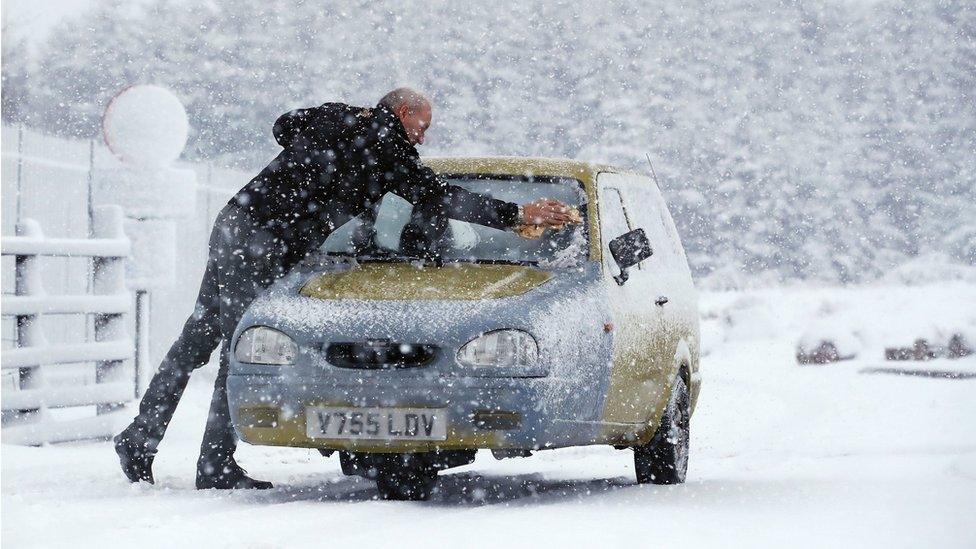
When it comes to de-icing your car, patience is a virtue.
For starters, don't do what this driver did and leave only a tiny gap in their snow-covered windscreen before driving off.
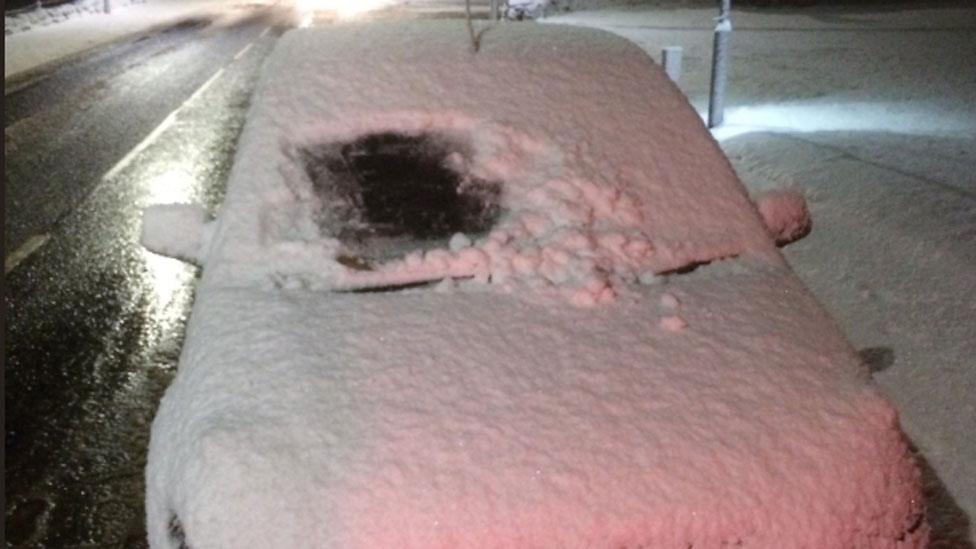
Police Scotland has released images of the car stopped on the A9 at Thurso
When you use the car's heater to defrost the windows, increase the heat gradually or it'll create extra mist.
Brush off the snow from the car's exterior, including the front grille.
Don't use boiling water to de-ice windscreens - hot water can crack the glass, and the water will only freeze again on the screen or on the ground where you are standing.
Instead, spray the windscreen with plenty of de-icer and use a scraper to remove the frost from the entire screen.
A squirt of WD-40 can also prevent door locks freezing up. If they do, heat your key with a lighter to melt the ice.
But if you fancy a more extreme solution, you could take the approach Russians used to de-ice their airplanes: find leftover jet fighter engines and use them to blast hot air at the affected areas. (Results not guaranteed.)
How can I boost my immune system in the winter weather?
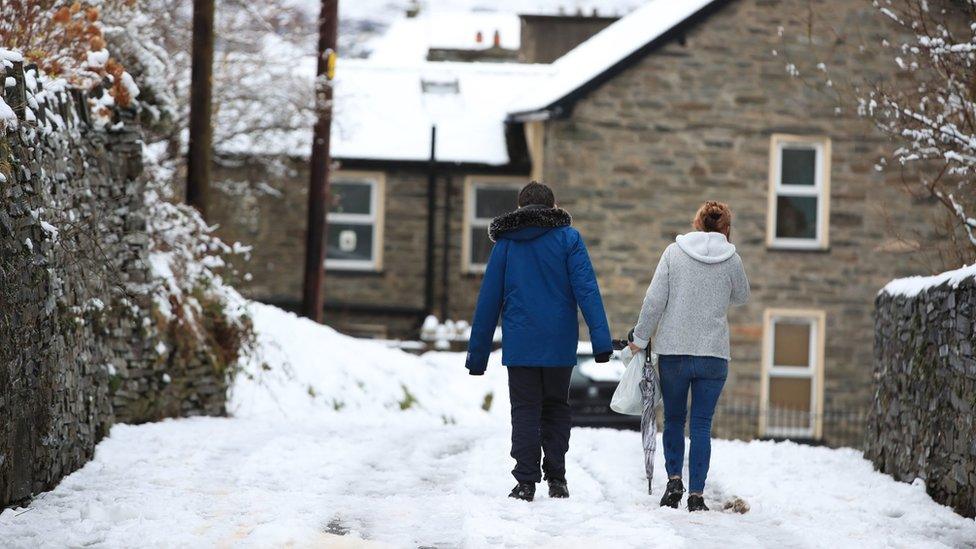
Sadly, rounding off your lunch of crisps and chocolate with a fizzy vitamin C tablet isn't a surefire way to stave off the office cold.
It mainly comes down to - no surprises here - eating well, sleeping properly, and exercising enough.
The NHS recommends, external eating plenty of fruit and veg, as well as a hearty breakfast to set you up for the day.
Milk and dairy products such as cheese, yoghurt and fromage frais are also great sources, external of protein, vitamins and calcium.
At what temperature does snow fall?
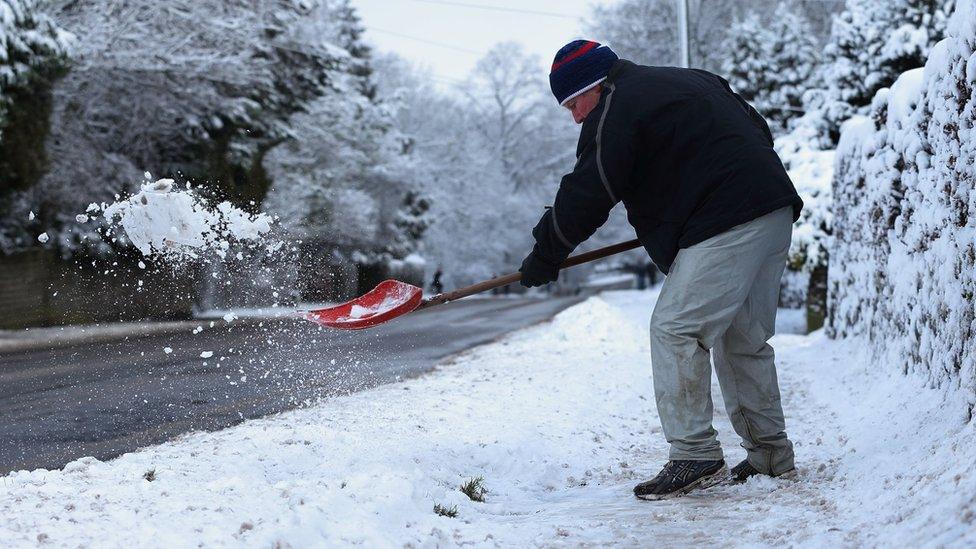
Contrary to popular belief, it doesn't have to be below zero to snow.
You can start wishing for a snow day as soon as the temperature drops below 2°C.
According to the Met Office, external, most of the UK's heaviest snowfalls tend to be when the temperature sits between 0°C and 2°C.
Any hotter than that and the snowflakes will melt and fall as sleet or rain.
Why does salt melt ice?
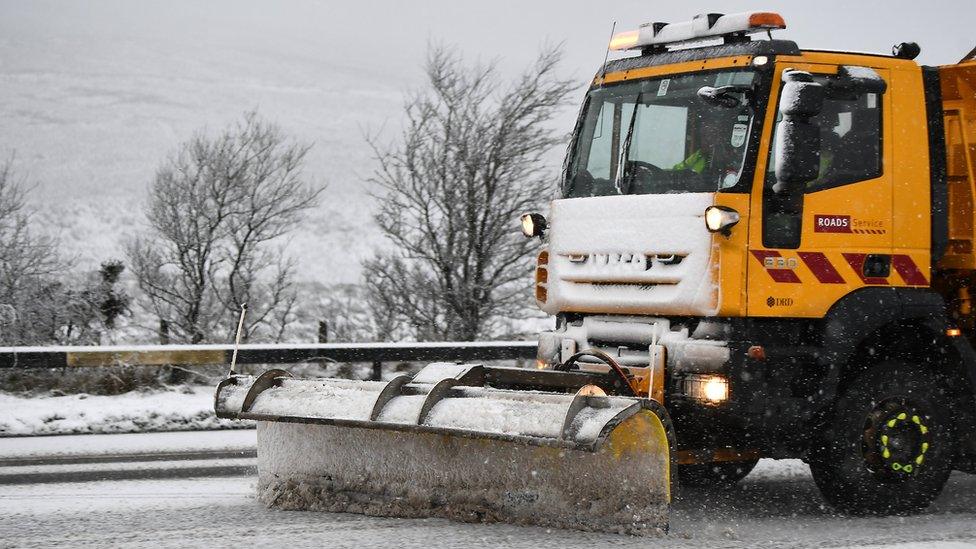
Gritters may have been out in force - but the "grit" they've been laying is actually rock salt.
Salt lowers the freezing point of water, so it stops ice forming and causes existing ice or snow to melt.
How should I drive in snow and icy conditions?
In a word, carefully. Stopping distances are greater in snow and ice.

Allow extra time, plan your journey, wear warm clothes, and make sure your phone is properly charged.
Stock up on chocolate, biscuits and hot drinks, in case you get stuck.
Five handy winter driving tips
After de-icing your car, use second gear to pull away, lifting the clutch gently to avoid wheel spin.
Stay in a higher gear for better control as you pick up speed.
Maintain the right speed for the conditions - not too fast so that you risk losing control, but not so slow that you risk losing momentum when you need it.
Why do schools close when it snows?
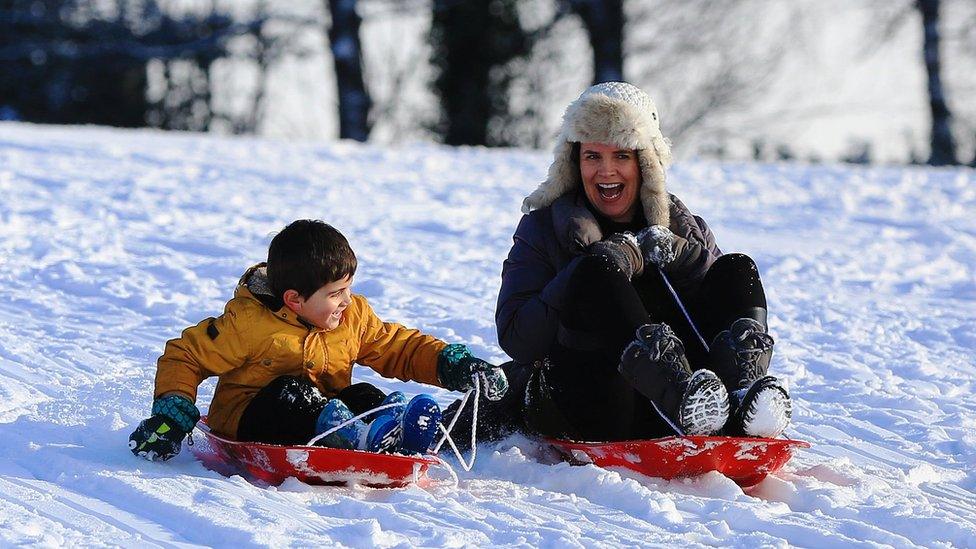
If your school has declared a snow day, you've got your head teacher to thank.
They are usually the ones who decide whether to close the school.
The decision is based on the welfare of children, taking into account whether:
children can get to and from school safely
the site is safe
there are enough staff to supervise the students.
If the weather is fine in the morning, but scheduled to get worse later in the day, the school may decide to close for the whole day.
What actually is snow?
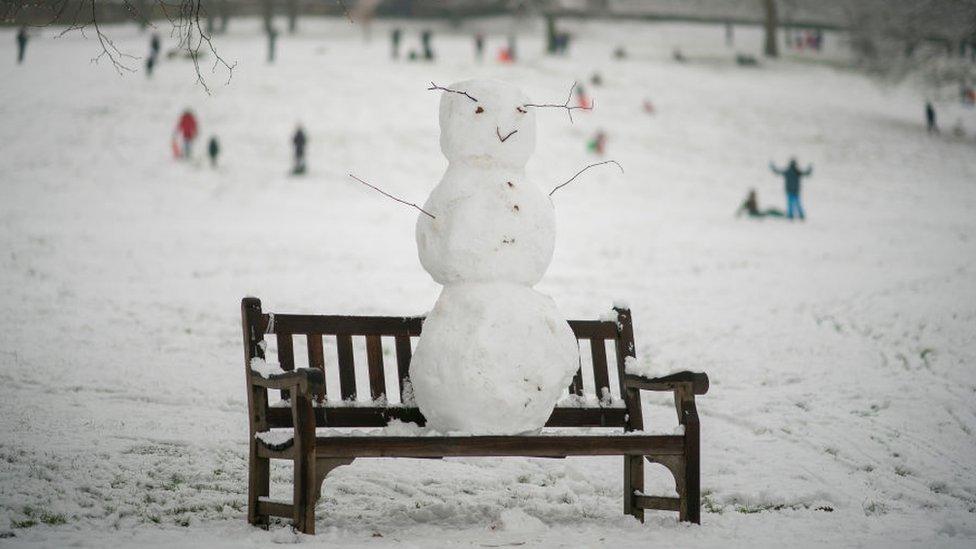
Most people know it's white and cold and falls from the sky. But what actually is it?
As the Met Office explains, external, snow forms when tiny ice crystals in clouds stick together, becoming snowflakes.
If enough of these crystals stick together, they'll become heavy enough to fall to the ground.
As the snowflakes drift down from the sky, those falling through moist air that is slightly warmer than 0°C will melt at the edges and stick together, producing big flakes.
This type of snow is "wet" and makes for good snowmen.
"Dry snow", which is ideal for snow sports, comes from snowflakes that fall through cold, dry air, producing small, powdery flakes.
- Published31 January 2019
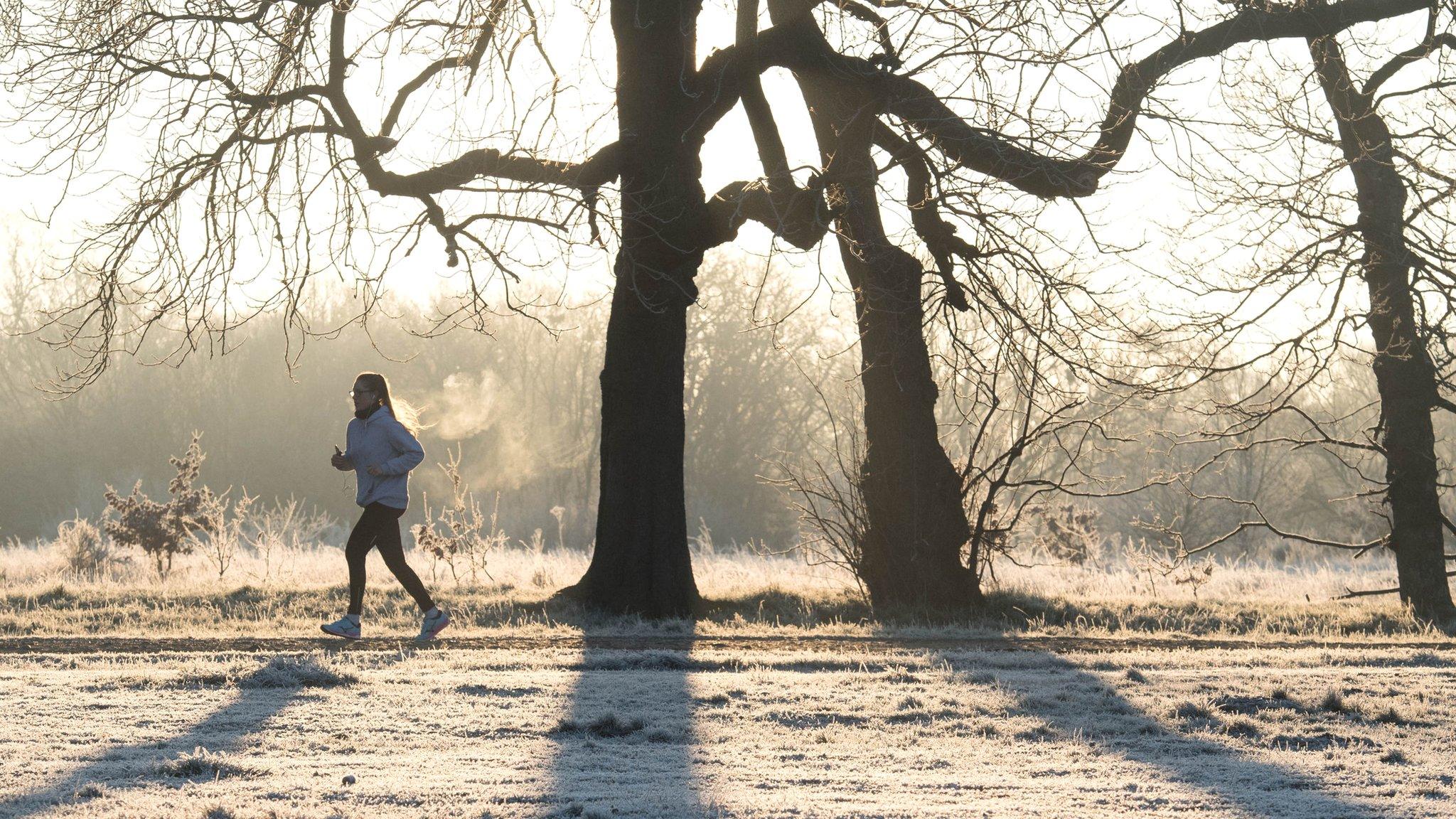
- Published30 January 2019

- Published11 December 2017
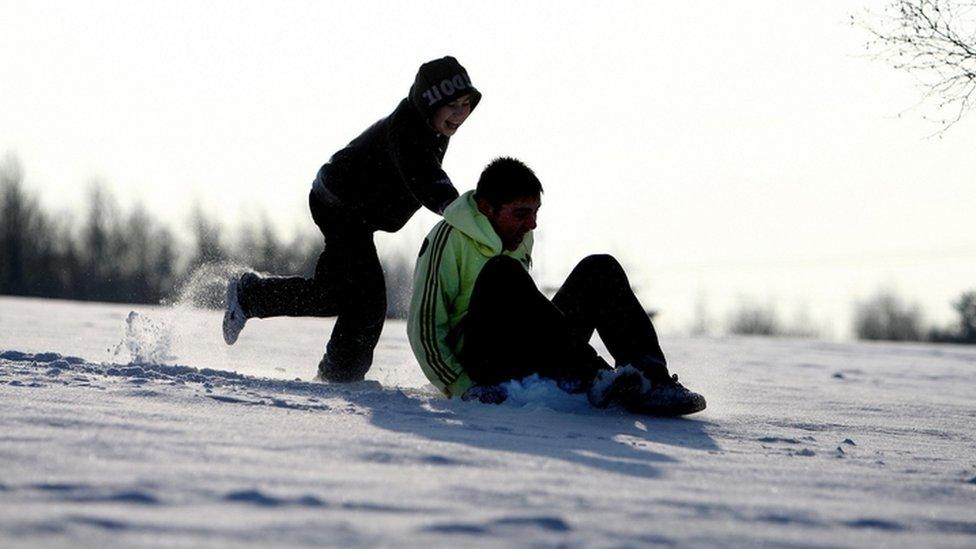
- Published30 January 2019

- Published30 January 2019

- Published30 January 2019
